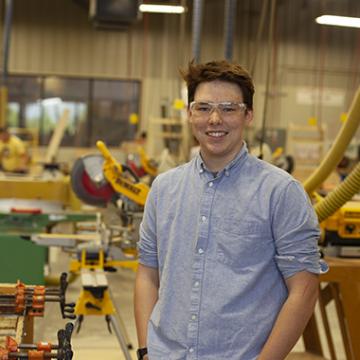Luke discovers career options beyond woodshop
Whether he goes to college or looks to advance in carpentry and cabinet making, Luke Ballinger leaves high school with good options.

Luke Ballinger
"I'm going to college and my goal is to get a civil engineering degree. But I'm kind of torn right now, because I've got this good job where I could have a good career."
Luke Ballinger just thought he liked woodshop. Now he has options, working a part-time job thanks to the skills he learned in Carpentry and Cabinet Making at Francis Tuttle while pursuing a college degree.
“I’ve always thought that I could make a really good career out of it. I’m going to college and my goal is to get a civil engineering degree,” Ballinger said. "But I’m kind of torn, because I’ve got this good job right now where I could have a good career.”
Ballinger said his decision to take woodshop while attending Edmond Memorial High School came from a family tradition.
“My dad’s an electrician, so I go and help wire houses with him. That was always fun to get out there and work with my hands,” he said. “And my uncle, for a hobby he builds cabinets. So anytime a family member was building a new house, he’d build the cabinets for them.”
When he came to Francis Tuttle, he was amazed by the amount of resources available to students. Working with the computer numerical control (CNC) machine turned out to be a valuable experience professionally when he was hired at NexSpaces in Oklahoma City.
“They liked that I had that experience when they hired me,” Ballinger said. “I’m probably one of the youngest people in the country running a CNC machine in a shop, because I’m only 18.”
Ballinger is continuing his education to become a civil engineer. But he said there are definitely things about Carpentry that crossover, and he could still pursue a Carpentry career path in the future.
“When you start a cabinet, you have a sheet of plywood that’s flat,” Ballinger said. “Envisioning that as a cabinet, you have to train your brain to do that. You look at parts and imagine what the final product would be, so I think that will translate over.”